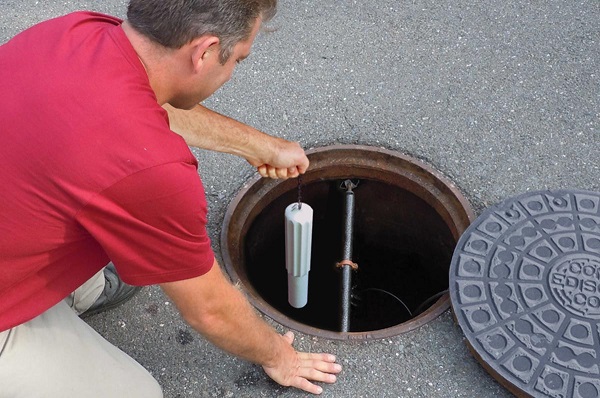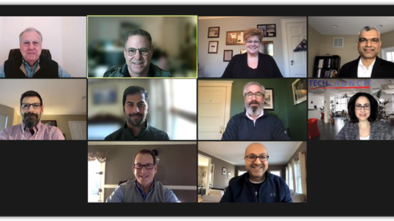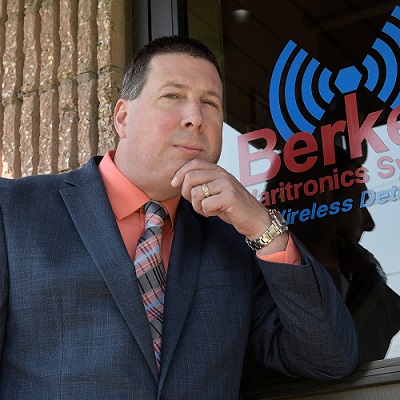Eastech’s IoT Solution Helps Municipalities Locate Faulty Wastewater Infrastructure and Prevent Toxic Spills
A New Jersey flow-control company believes it has a more cost-effective method for monitoring sewer infrastructure to prevent toxic water from invading nearby lakes and rivers or backing up into homes.
The solution uses a wirelessly enabled sensor installed in the sewer that passes information back to the relevant municipal department through software analytics that provides information to them.
Frank Sinclair, owner of Eastech Flow Controls (Upper Saddle River), states rather emphatically that “not many people are familiar with what goes on in the sewers, and when I tell people that [Eastech is] monitoring what’s going on, it’s always the same reaction: ‘What do you mean? Aren’t they doing that already?’”
Yes, cities and municipalities do monitor their sewers, but Sinclair said they’re not doing it well enough. “There are water meters and there are gas meters and there are electric meters, and everyone assumes that [officials] also know what’s going on underground in the sewers. But how can they when there are no smart meters or sensors to provide them with the necessary information.”
Meet the iTracker, a patented smart sensor developed by Sinclair and his Eastech team that monitors the unwanted volumes of clean rain and ground water (called “inflow and infiltration,” or I&I) invading the wastewater that’s piped through stretches of faulty underground infrastructure.
Although Eastech’s corporate headquarters are in Upper Saddle River, Sinclair, a New Jersey resident, noted that the company’s manufacturing is done in Tulsa, Oklahoma. Tulsa was the original headquarters of a flow meter company that Eastech purchased from Milwaukee-based Badger Meter.
Eastech and Sinclair have an interesting history. Sinclair once owned Westlock Controls, a company in Saddle Brook that he eventually sold to Tyco (Milwaukee). After that, he acquired a division of Badger Meter. When he began studying the technology behind the flow meters, he realized that they were being sold to sewer systems and to wastewater collection facilities, but weren’t sufficiently detecting any problems in the underground piping. That was because 80 percent of the problems were occurring in only 20 percent of the pipes, and there was no cost-efficient way to locate that 20 percent.
“The new iTracking technology that we are presently providing to municipalities throughout North America was developed here in New Jersey, with the sales, marketing and new product design also spearheaded in New Jersey,” Sinclair said.

He then explained how the system works: “A municipal employee can walk up to the iTracker smart sensor, easily installed in a sewer manhole, and connect to it directly with any smart handheld Wi-Fi enabled device — a phone, tablet or laptop. Or the data can be transmitted via cellular to a PC. The sensor has an integrated embedded server within the internal electronics, so an external app is not required.
“Once the data regarding the performance of the wastewater infrastructure in question is imported into a PC running our iTracking analytical software program, reports are automatically generated pinpointing the location within the wastewater collection infrastructure of any faulty or crumbling infrastructure allowing the entrance of unwanted ground and storm water.”
The customer can then identify and schedule for remediation the vulnerable sections of the infrastructure, thus preventing millions of gallons of clean ground water and storm water from overwhelming the network of pipes and even the treatment facility. As a result, this clean water, combined with the sewage, will have to be dumped into our lakes, rivers and streams. If not, the pipes will ultimately back up and the streets and residential/commercial basements will be filled with sewage.
“In a nutshell,” said Sinclair, “iTracking quickly, simply and cost-effectively locates failing underground wastewater infrastructure at a fraction of the cost of present methods, thereby preventing toxic spills, basement backups and the costly requirement of increasing the size of the treatment facility in order to handle the huge increases in volume due to extraneous storm water entering the system through faulty infrastructure.”
Municipalities that don’t use the inexpensive iTracking technology to locate their faulty infrastructure end up using technology that’s much more costly. Once they do find out where their problem lies, “they have no money left to remediate it.”
According to Sinclair, the iTracker system can find the problem and leave valuable dollars left over for remediation. Very little labor time is required to install the system in a sewer (installation takes 15 minutes), no workers are exposed to poisonous gases and sewage and the iTracker smart sensors are designed to be maintenance-free. Most importantly, no critical data is lost.
The iTracker took about two to three years to develop, and was launched in the fall of 2018. “In nine months,” said Sinclair, “140 communities in the United States have purchased the iTracker. And that’s pretty amazing, because no one had it budgeted. They found the money to do it.”
The technology is sold through sales reps, so Sinclair isn’t always sure how many Garden State communities are using it. “If you come to somebody and logically say, ‘Hey, we have something available to help you cut your costs and save taxpayers money, in all fairness to all these people who are working in these communities, everyone would like to adopt it. We’ve only had it out nine months, so it’s too early.”
Sinclair was up front about what he feels can improve the system. “It would be nice if communities would spend the additional time and money to better train the people who are going to use the technology. But the key thing is getting the word out there that a technology is available now that can safely and inexpensively find the problem in your sewer system.”
He added, “It’s a lot less expensive to find the problem and cut back on the volume that’s entering the treatment plant than having to spend millions of dollars to build a new treatment plant. Technology moves along, and I think that, as more and more communities see that for one-tenth the cost of the present technology, they can solve their sewer problems, this technology will start catching on. And, eventually, everyone will use it for locating faulty wastewater infrastructure and preventing basement backups and toxic spills, while concurrently saving the taxpayers money.”




